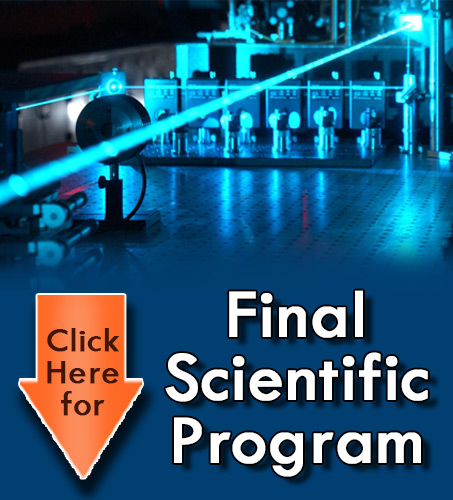
Victor Kärcher
University of Münster, Germany
Title: Wavefront propagation simulations for a hard x-ray split-and-delay unit at the European XFEL
Biography
Biography: Victor Kärcher
Abstract
For the High Energy Density Instrument (HED) at the European XFEL a hard x-ray split-and-delay unit (SDU) is built covering photon energies in the range between 5 keV and 24 keV. Th is SDU enables time-resolved x-ray pump / x-ray probe experiments as well as sequential diff ractive imaging on a femtosecond to picosecond time scale. Th e set-up is based on wavefront splitting that has successfully been implemented at an autocorrelator at FLASH. Th e x-ray FEL pulses will be split by a sharp edge of a silicon mirror
coated with Mo/B4C and W/B4C multilayers. Both partial beams then pass variable delay lines. For diff erent wavelengths the angle of incidence onto the multilayer mirrors is adjusted in order to match the Bragg condition. Hence, maximum delays between +/- 1 ps at 24 keV and up to +/- 23 ps at 5 keV will be possible. In order to evaluate the infl uence of the device on experiments with focused hard x-ray pulses, time-dependent wave-optics simulations have been performed by means of Synchrotron Radiation Workshop (SRW) soft ware for SASE pulses at hv = 5 keV. Th is soft ware tool has recently been applied to assess the capability of the SDU to measure the temporal coherence properties of hard xray FEL-pulses. For this earlier study, diff raction at the beam splitter and a onedimensional cut through the surface profi le was taken into account. At the HED instrument, the XFEL radiation will be focused by means of compound refractive lenses (CRL) in order to perform experiments with intense, focused hard x-ray pulses. Th e results of these experiments severely depend on the fl uence and the spatial shape of the beam that is obtained in the focal area. Th erefore, in this paper the impact of wave-front distortions on the spatial intensity profi le in the focus is analyzed. For this purpose, the entire optical layout of the SDU, including diff raction on the beam splitter edge and the two-dimensional surface profi les of all eight mirrors are taken into account. Th e XFEL radiation is simulated using the output of the time-dependent SASE code FAST. For the simulations diff raction on the beam splitter edge as well as height and slope errors of all eight mirror surfaces are taken into account. Th e impact of these eff ects on the ability to focus the beam by means of compound refractive lenses (CRL) are analyzed.

